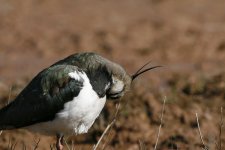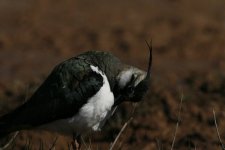Bickering ? I would call it discussion.
The first is not really exposed correctly for the shadows, and the whites are blown, but that situation would have led to an incorrectly exposed image no matter what settings were use, so i wouldnt have even attempted it under those conditions, the only time for contrasty images is very early and very late.. Also as said metering is a very tricky subject, there is no metering system that will get every image right all the time, as a lot of images can have 2 or 3 stops of light difference in them.
I have never said dont use the Exif, all i said was i cant see the point on anyone elses posted images, and here is why. In the old days of film ( and yes, that statement is relevant ) the image was more or less "as taken", nowadays people can do allsorts of magic using photoshop type programmes, and can resurrect an image that may have been underexposed by 2 stops or so. If a processed image such as this is posted,and believe me, some people are good enough with it for you not to tell, what will the accompanying Exif tell you ? It will tell you for example it was shot at 1/4000 @ f8, but you have no idea it was underexposed by 2 stops. So, you have a look at it, and say, ok, ill use those settings next time its sunny, and what happens ? You end up with a shot thats underexposed by 2 stops strangely enough, and spend ages wondering why this is the case. If it were only original images that were posted with Exif, then yes, i can see how that would be useful, ( as in the case in this thread ) but you have no way of knowing what has been done regarding shadow/highlight, exposure, brightness, contrast, noise smoothing, cropping etc etc etc. I know people who use about 30+ layers on every image they take, ( though god knows why, i never use layers unless adding text ) how can you possibly know what they have done ? Thats why i say the Exif is meaningless.

 o
o






